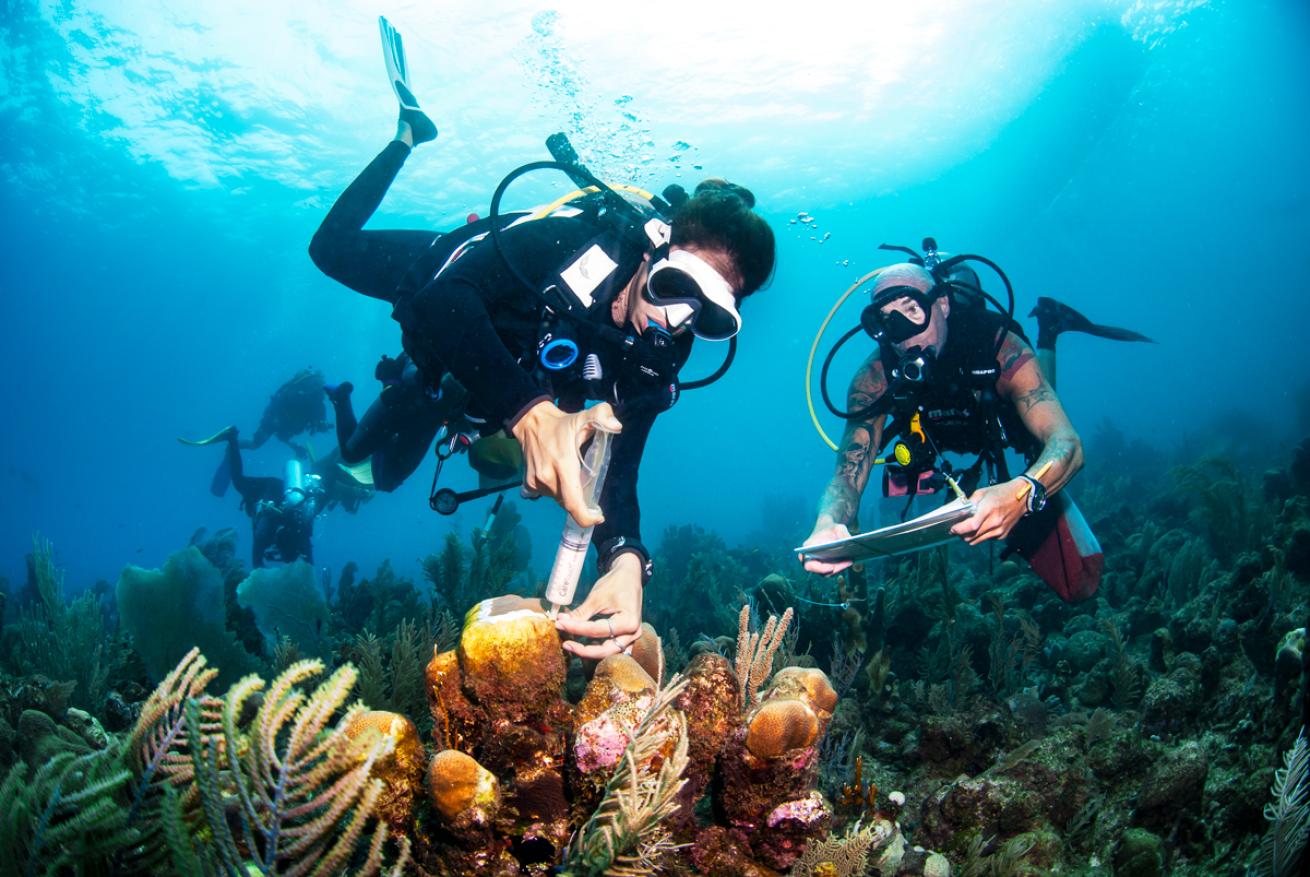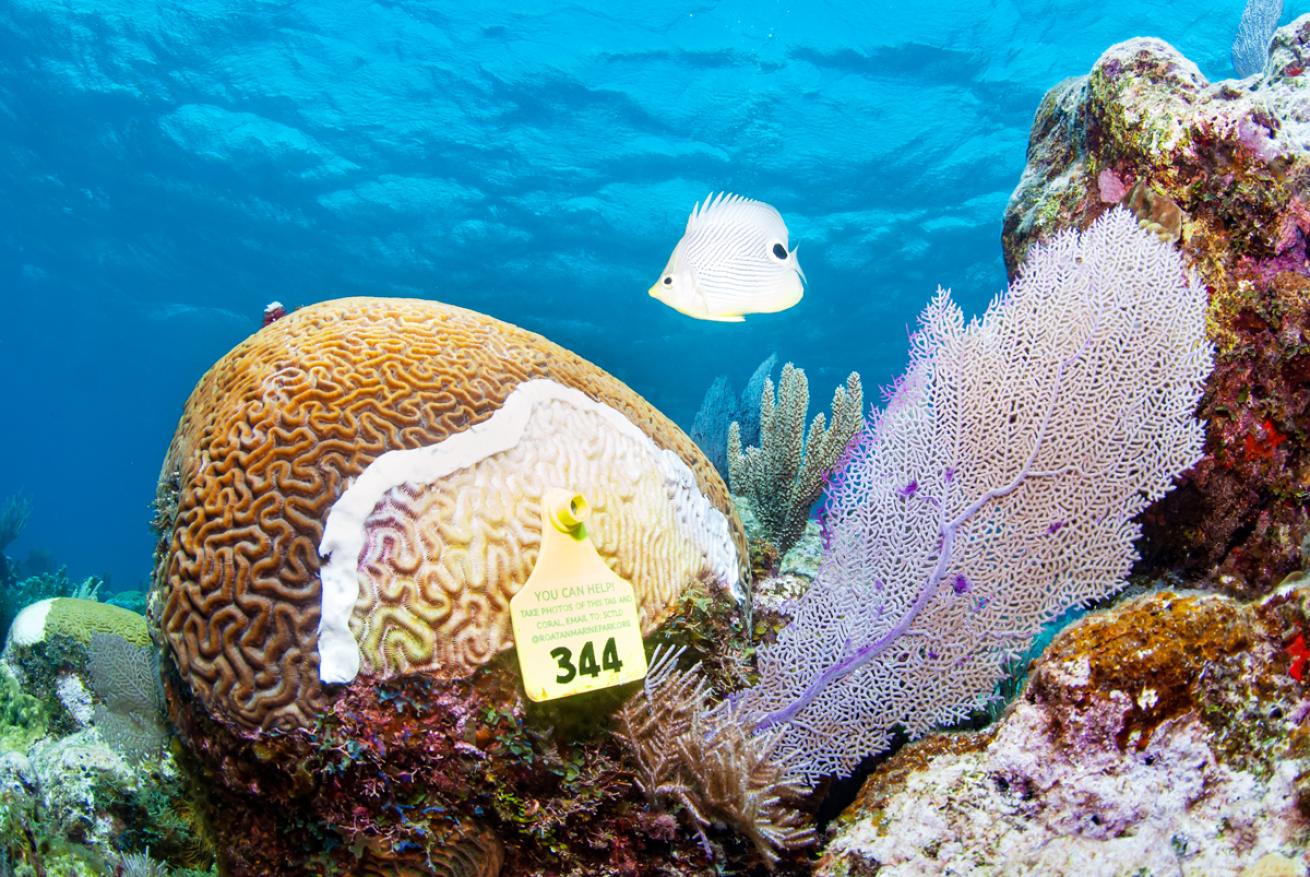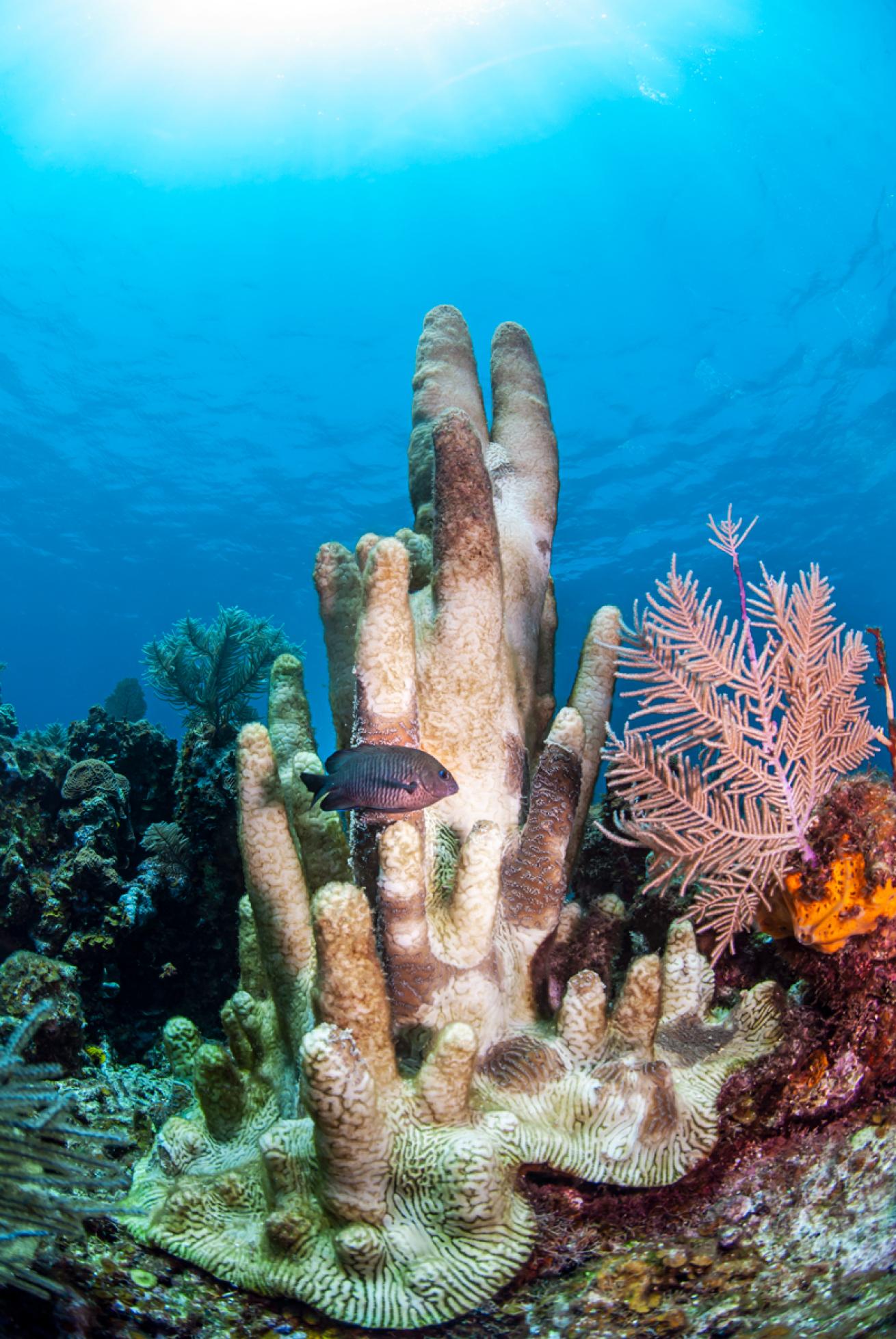A Coral Disease is Spreading Through World's Second-Largest Barrier Reef

Antonio BusielloVolunteer divemasters use a syringe to apply antibiotics to an afflicted coral.
It starts with a small white spot, and in a few weeks, a beautiful, bright-colored coral that took years to grow can end up as a dead rock with no way back.
Pillar coral is my favorite type of Caribbean coral formation. These corals proudly grow straight toward the surface like underwater cathedrals shaped by time and marine currents. I love taking pictures of them and looking at all the little fish swimming around the spires. Sadly, I no longer see too many living pillar corals, though I look for them every time I dive. Pillar corals, like many other coral species, have been affected by a new disease called stony coral tissue loss disease (SCTLD).
In 2021 I dived with marine biologists for several weeks in the Roatán Marine Park, documenting the attempt to save the Mesoamerican Barrier Reef from this new threat. The second-largest barrier reef system on Earth, it stretches nearly 700 miles, from the Yucatán Peninsula down through Belize and Guatemala to the Bay Islands of Honduras. It is home to hundreds of species of coral and marine life.

Antonio BusielloDivers are asked to help monitor the progress of diseased corals.
There are two main types of coral: soft coral and hard coral. Hard coral, or stony coral, produces a rigid skeleton made of calcium carbonate, a hard substrate that eventually becomes rock, the foundation of a coral reef. That’s why hard corals are considered the primary reef-building corals. More than 20 different kinds of hard coral are affected by SCTLD. Unlike other coral diseases such as bleaching, SCTLD does not leave any chance of survival or recovery. Major reef builders such as brain corals and boulder corals are dying all over the Mesoamerican Barrier Reef, compromising the entire reef ecosystem in the Caribbean.

Antonio BusielloPillar coral.
The only solution to the problem, so far, is the application of antibiotics to lesions found on the infected coral. However, due to the aggressive nature in which the disease spreads, it is very hard to fight back. The sick coral needs to be monitored even after it has been treated, and in many cases, it needs to be treated again. Roatán Marine Park biologist Gabriela Ochoa says the disease has spread to 20 countries in the eastern Caribbean and Mesoamerican Barrier Reef System.
I like to think that the reef will find a way to fight back. I hope that the help of dozens of volunteers every day will slow down the spread and allow the reef to find a natural solution against this new threat. But every time I see that small white spot on a coral my diving heart skips a beat. And unfortunately, many coral formations that I used to admire during my dives in Roatán are already gone.
Stop the Spread
If you’re traveling through the Caribbean, or diving at different sites on the same island, the Roatán Marine Park recommends divers rent gear instead of bringing their own. Rented gear stays within the specific local area and is therefore less likely to contaminate new sites. Divers may unknowingly transport the disease to an unaffected site if they use their own gear.
It’s also recommended divers soak nonsensitive equipment for 10 minutes in a 1 percent bleach solution, rinse in fresh water and then allow it to air dry. Wetsuits, BCDs, masks and fins can also be decontaminated in the solution. Allow the bleach solution to degrade in the sun for 24 hours before you dispose of it. Regulators, computers, gauges, underwater cameras and other sensitive equipment should be decontaminated using fresh water and antibacterial dish soap or an isopropyl alcohol wipe. Remember not to touch the corals: Since the disease may be transmitted through contact, if you touch infected corals then you may pass the disease on to healthy coral.










